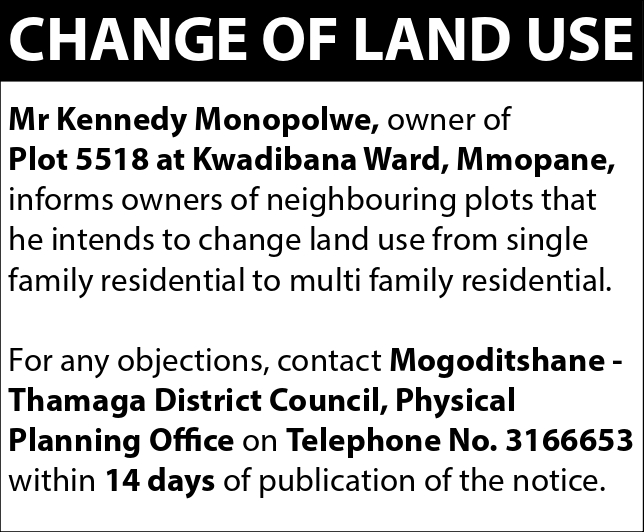Many resource-rich countries have failed to use natural resource wealth to promote economic growth and development. On average, resource-rich countries, especially in Africa, have done poorly than countries without natural resources. Botswana is considered an exception, but if commodity-reliance persists without economic diversification, our future will not be as sparkly as the diamonds we produce, writes OLERATO OLEBOGENG
In April 1967, kimberlite pipes were discovered at Orapa in the Boteti sub-district. Not long after, on 23 June 1968, the De Beers Botswana Mining Company, later re-named Debswana, was formed. By 1972, diamond mining operations had begun at Orapa mine. Since then, Botswana has become one of the leading producers of diamonds, using diamond mining export revenues to transform from one of the poorest countries in the world to an upper middle-income country.
‘An African success story’
For almost 25 consecutive years (1975-2000), Botswana dominated the list of the world’s fastest growing economies, expanding at an average rate of 10% a year. This makes Botswana one of the few countries to maintain high growth rates decade after decade. Thus, compared to other sub-Saharan African countries, the economic growth of Botswana is remarkably striking, hence the country is often considered the African success story.
What draws many intellectuals to the ‘African success story’ is that Botswana has managed to avoid the ‘resource curse.’ According to the resource curse theory, countries which are abundant in natural resources tend to have less democracy and less economic growth than countries without resources. Of course, this theory is highly controversial, especially considering the horrific exploitations of slavery and colonialism imposed on the countries with blighted by resource curse. Despite this, many intellectuals point to countries such as the Democratic Republic of the Congo where the bloodiest conflicts, starvation and human rights violations are linked to resource abundance.
The case of Botswana is different, hence it is cited as the African country that beat the resource curse. For 53 years, Botswana has managed well the difficult development path of a commodity-based economy. The Government of Botswana has avoided many pitfalls of commodity reliance. There is evidence of a monitored exchange rate, stabilisation policies, sovereign wealth funds and prudent mining of diamonds. Economic policies are implemented to manoeuvre the booms and busts of commodity prices. Most importantly, Batswana have not experienced civil wars and economic development was promising in past years. One may say in this way Botswana is an anomaly and challenges the negative narrative of African underdevelopment.
Pitfalls of commodity-reliance
However, despite the remarkable economic growth of Botswana of the last 53 years, the country remains reliant on diamond mining wealth as the driver of the economy. High reliance on commodities can be detrimental for long-term economic growth. For instance, resource extraction creates few employment opportunities. As of 2018, Debswana had has had only 5 589 employees. This is evidence that mining industries often lack the capacity to absorb a large workforce. Furthermore, the lack of export diversification and limited industrialisation makes Botswana vulnerable to various external shocks. For example, the COVID-19 lockdown led to fuel shortages due to reduced supplies of fuel from South Africa. One may argue that there exists a vicious cycle of reliance on diamonds which has reinforced itself year after year. This reliance on diamonds traps Botswana in a loop of dependence through mechanisms of lock-in effects and positive feedbacks. Over time, it has become extremely costly to divert from diamond export reliance to another development path.
The initial conditions of the country may have driven it towards commodity dependence. After Botswana gained independence, diamond mining was the most efficient and profitable source of economic growth and development. As a result, almost all policies, investments and production structures were centred on development of the diamond mining industry. The danger of commodity-reliance is that it is self-perpetuating. The danger of a commodity trap is that it is self-perpetuating. The more a country is reliant on a commodity, the more it becomes locked in development processes that centre on that particular commodity, resulting in a vicious cycle which is difficult to escape from. For instance, since diamonds yield more revenue, it may seem easier to stick to the comparative advantage of diamond mining.
However, if not monitored well, a commodity-based development path may result in severe economic consequences. Often commodity-reliant countries exhibit limited industrialisation and little to no manufacturing of goods. Since today’s world was built through industrialisation, it is rare for a country to transform from a low-income to an advanced economy without undergoing industrialisation. It appears that it has become extremely costly for Botswana to diversify its economy. Since diamond mining has been the main driver of the economy for over 53 years, economic diversification seems to be an economically draining pursuit as it requires starting afresh in new industries. The reality that must be faced is that the prudent diamond mining and economic stabilisation strategies which Botswana implements are laudable but insufficient to escape from commodity-reliance.
An uncertain post-diamond era
The reality is that diamonds are not forever. Diamonds are a non-renewable resource and will one day be depleted. Therefore, diamond revenues will inevitably decline over time. Some economists have suggested that the immediate decline of diamond revenues will be limited as diamond mining is disconnected to the rest of the economy. However, diamond mining remains the main driver of investments and savings in the economy.
Economic diversification has been the reprise since independence. Unfortunately, Botswana still manufactures almost nothing and exports little else other than diamonds. The current economic turmoil of rising youth unemployment is a wake-up call to open up other industries and diversify along a more long-term economic development path. Being a landlocked country with a small population means more effort will be needed to attract investors to new industries. Botswana has a long way to go. Fifty-three years of successful economic growth is just the beginning of the development trajectory. But time seems to be running out for Botswana’s diamond-led economy. A practical diversification plan is urgent and necessary.
As a nation, we must prepare for a post-diamond era. The rest of the world is watching Botswana. Descriptions such as “losing its spark” and “not so perfect after all” are springing up. If all fails, the stature of Botswana and the standard of living of Batswana are heading towards an uncertain future. If commodity-reliance persists, our future will not be as sparkly as the diamonds we produce.




